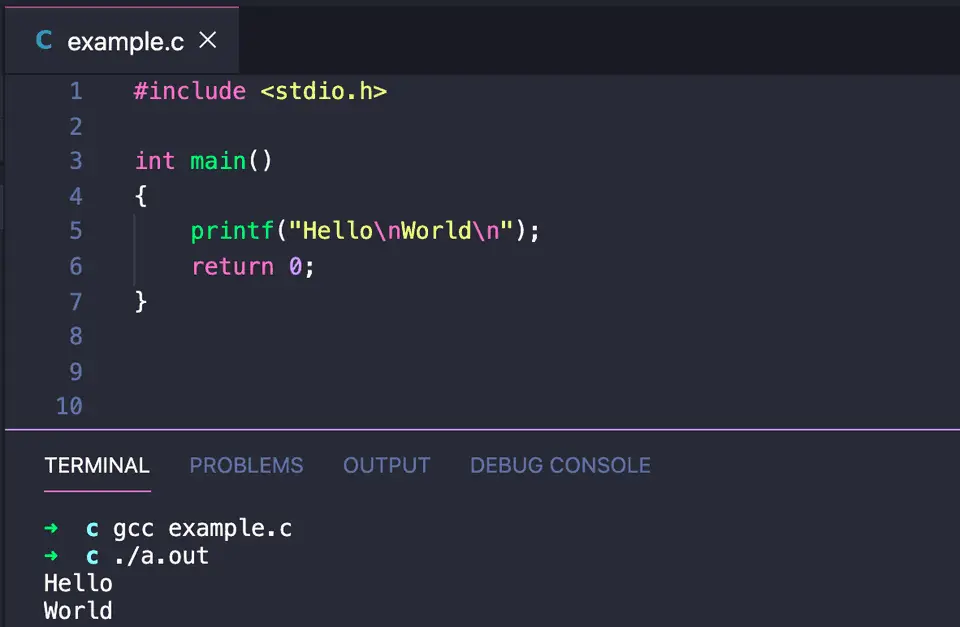Escape sequence in C:
Escape sequence is a sequence of characters those are used for any other characters or sequence of characters which are hard to display directly in a string. In C, each escape sequence starts with a backslash __ and consists of one or more characters after this. This backslash is called escape character.
For example,\b is used for backspace and \n is used for new line. Without these escape sequences, it won’t be possible to add them in a string.
Escape sequences in C:
Following escape sequences are defined in C:
| Escape sequence | Description |
|---|---|
| \b | Used for backspace |
| \e | Escape character |
| \a | Used to play an alert like beep, bell |
| \f | Formfeed |
| \n | newline |
| \r | carriage return |
| \v | vertical tab |
| \t | horizontal tab |
| \ | backslash |
| ’ | single quotation mark |
| ” | double quotation mark |
| ? | question mark |
How to use escape sequence in C program:
We can put an escape sequence in anywhere in a string in C and it will be translated. For example:
#include <stdio.h>
int main()
{
printf("Hello\nWorld\n");
return 0;
}It will print:
Hello
WorldBy adding the escape character \n, we added one newline in between the words.
You might also like:
- C program to sort names or strings in alphabetical order
- C program to print the current hour, minute and second values
- C program to print multiplication table using goto statement
- How can we access global variables in C
- C program to convert decimal to hexadecimal value
- C program to check if a Hexadecimal number is even or odd


